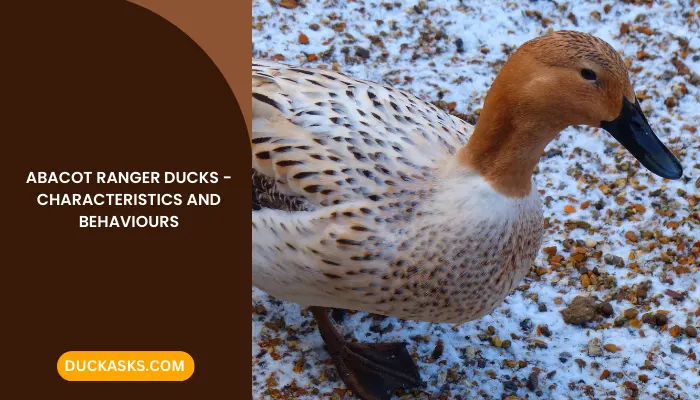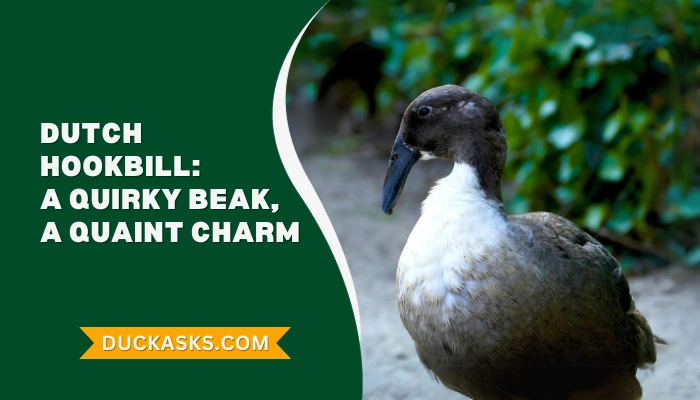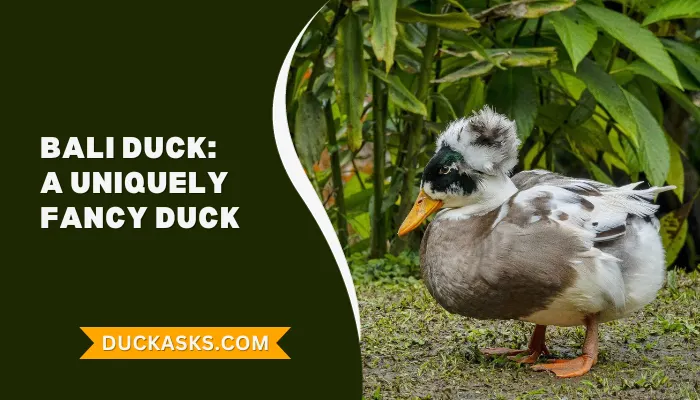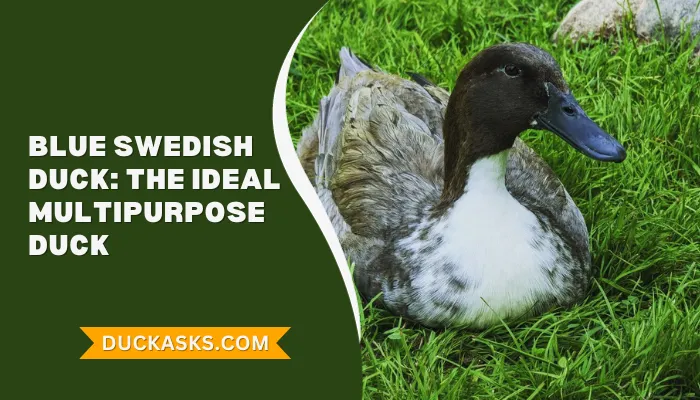Black East Indian Duck: History And Breed Guide
The Black East Indian duck is one of the most popular duck breeds worldwide. These ducks are eye-catching, with a metallic sheen and attractive plumage style that makes them unique.
As far as exhibition or ornamental purposes go, few other duck breeds are as ideal for those purposes as the Black East Indian.
But how exactly do you fancy and raise these ducks? In this article, we will walk you through the whole process to ensure you’re successful.
Whether you want them for exhibition, ornamental, decoration, or companionship, here’s everything you need to know about the Black East Indian duck.
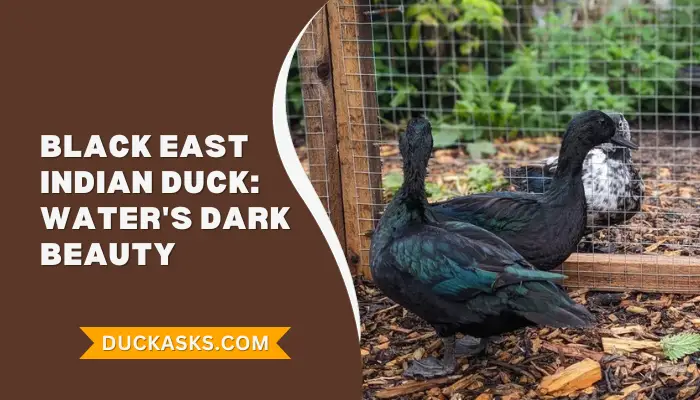
Looking for more articles about duck breed:
Black East Indian Duck Profile
| Name | Black East Indian Duck |
|---|---|
| Scientific Name | Anas Platyrhynchos Domesticus |
| Common Names | Common Names Black East Indian Duck Black East Indie |
| Origin | America |
| Size | 4 Inches |
| Weight | 1 to 1.5 Pounds |
| Lifespan | 10 Years |
| Feather Color | Dark, Greenish-Black Plumage |
| Climate Tolerance | High |
| Behavior | Quiet, Reserved |
| Special Features & Flight | Metallic Sheen Color Good Flight Ability |
| Breeding and Maintenance | Easy |
| Easy to Keep? | Yes |
| Duck Purpose | Ornamental, decoration, exhibition |
| Egg Productivity | Low |
Overview
The Black East Indian duck is an ornamental duck primarily used by fanciers for exhibition.
While the ducks are beautiful, their low egg productivity means they’re not suitable as egg layers. However, they could make good pets, too.
History and Origins of Black East Indian Ducks
The Black East Indian, also called East Indie, is the oldest bantam duck breed. Typically, historians trace the origin of this breed back to the United States, but it isn’t clear.

Over the years, the breed has had other names, like “Brazilian” or “Buenos Airean.” This denomination might link the origin to South America, but it’s still uncertain.
Supposedly, the ducks arrived in the United Kingdom during or before 1831 from Buenos Aires.
Another popular belief is that the breed is the result of years of development from its initial form found in the United Kingdom during the nineteenth century.
Then, fanciers in the United States perfected it during the twentieth century.
Physical Characteristics and Features
Now, we will explore the physical characteristics to learn how to identify the breed, including differences between males and females.

Appearance and Body Structure
The Black East Indian duck has a dark greenish-black plumage, with black as their base color. This color is visible in the beaks and feet.
Over time, hens (females) can develop white shades on their feathers. Drakes (males) can also experience this change, but it’s a breed flaw and a reason to discard the males for breeding.
Differences Between Black East Indian Ducks & Black East Indian Drakes
There are some slight differences between the Black East Indian duck and the drake.
For example, the Black East Indian drake (male) weighs 1.5 pounds, whereas the hen can weigh between 1 and 1.5 pounds. Additionally, the ducks have black bills and dark legs, but drakes develop a light bill tip and orange hue on the legs over the years.
Behavior and Traits of Black East Indian Ducks
Knowing more about this duck breed will allow you to understand them better. Here are the essentials you should know.

Temperament
The Black East Indian is a calm duck that doesn’t create problems. It’s a duck with a reserved personality, which means they often prefer being alone or with other ducks of the same breed.
While the ducks are friendly, it’s sometimes better to let them forage and not interfere with them.
Breeding
The drakes and hens reach a mature age when they’re ten weeks old, and drakes with optimal health can mate with multiple hens at a time.
Afterward, the incubation period takes between 26 and 28 days until the eggs hatch.
Hens are protective and use their beaks and feet to protect their offspring. For this reason, it’s better to leave mothers and ducklings alone to avoid stress.
Lifespan
The lifespan of Black East Indian ducks is approximately ten years. Of course, the ducks will require proper living conditions to ensure they live this long.
For example, they will need a balanced diet and protection from predators.
Breeding and Raising
Fortunately, breeding and raising the Black East Indian duck is not problematic.
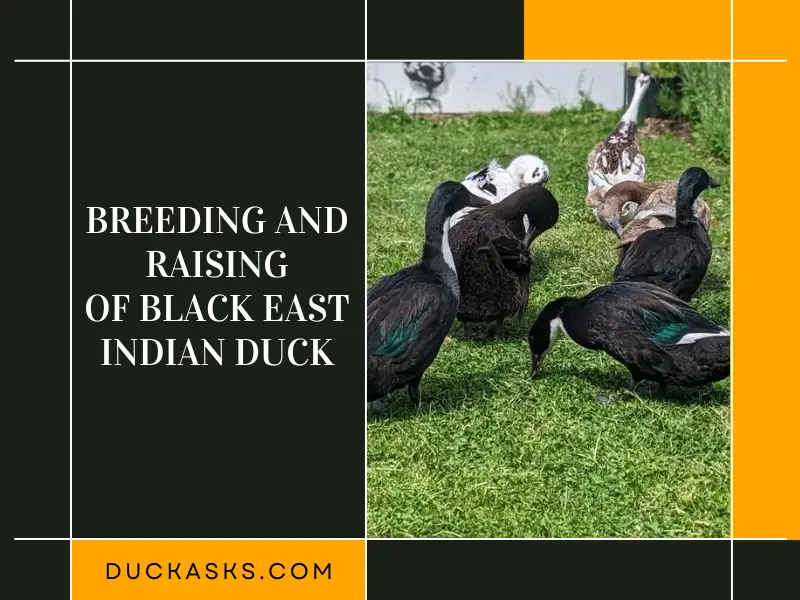
The ducks require little maintenance, and their reserved nature means they prefer being alone. Nonetheless, you have to provide food and a good water source.
Some Tips and Considerations for Successful Breeding
- Make sure to get your ducks from a qualified provider to avoid genetic flaws.
- Consider de-worming the ducks regularly to avoid the spread of diseases.
- Hens are good mothers, but acquiring an incubator will increase your likelihood of developing a larger flock.
- If the drakes develop white shades, do not use them for breeding. This trait is a flaw and will affect your intentions if you raise the ducks for exhibition.
- Don’t mate East Indie hens with drakes that are not a bantam breed. Otherwise, the hens could suffer damage during the mating.
Feeding and Housing Requirements
The Black East Indian duck requires a balanced diet as part of their feeding routine. Thus, you must buy commercial duck food to provide a nutritional content.
Likewise, you can complement this diet with fruits and vegetables.
If you keep the ducks outside or give them access to a backyard, they will eat insects, worms, and small fish. Seeds, berries, and weeds are other usual foods for these ducks.
Housing Requirements
The housing requirements of Black East Indian ducks are similar to other ducks. You can build a duck house, duck coop, or a similar structure to act as a shelter.
In any case, the construction must be three feet tall minimum and have 4 square feet of space per duck.
Likewise, it’s necessary to have proper ventilation and bedding made of straw or sawdust shavings to dry quickly. You shall also consider fencing the area to keep the ducks close and predators away.
The Egg Productivity of Black East Indian Ducks
This breed of ducks is not ideal for egg production, as they have a low production rate. In a year, the female Black East Indian will lay from 40 to 100 eggs.
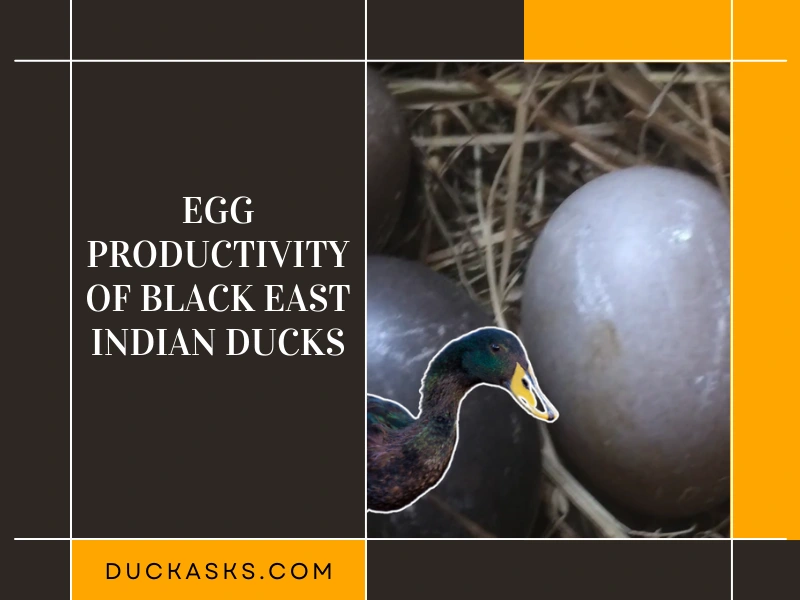
Thus, it’s not a suitable amount compared to other breeds that can produce way more than that.
However, the eggs of this duck are unique. They are of medium size and have a dark gray to black color. Later, during the laying season, this color will turn lighter, obtaining a green or blue shade by the winter.
The Meat Quality and Popularity of Black East Indian Ducks
Black East Indian ducks are small ducks and don’t weigh much. Therefore, farmers don’t usually raise this duck for meat production because it would waste time with little to no productivity.
Still, the meat quality is good, and the taste can be flavorful if you try it.
Frequently Asked Question
Are Black East Indian Ducks Good for Small-Scale Farming?
The Black East Indian duck is good for small-scale farming due to its small size and straightforward maintenance. As a result, this duck breed is easy to breed and raise in most scenarios.
Can black East Indie ducks fly?
Yes, Black East Indian ducks can fly and will fly away from the pond if you leave them unattended. For this reason, farmers usually clip the wings or train them to guarantee the ducks view the area as their house.
Are Black East Indian ducks friendly?
Black East Indian ducks are friendly. In a family household, the ducks will follow and be amicable to kids and adults alike. They can be a little bossy to other ducks, but this duck breed will not be aggressive or create problems.
Conclusion
The Black East Indian duck has one of the most eye-catching plumages in ducks and birds alike. For this reason, this duck breed is ideal if you’re looking for exhibition or ornamental ducks.
With good-looking aesthetics and little maintenance required, Black East Indian ducks are suitable for small and experienced breeders.
Did you find this article helpful? Then don’t miss out on our other informative pieces where we discuss all things duck-related. Go to our Facebook, Twitter, and Pinterest pages to stay connected with us.
References:
- https://www.waterfowl.org.uk/domestic-waterfowl/bantam-ducks/black-east-indian-duck/
- https://www.omlet.co.uk/breeds/ducks/black_east_indian/
- https://www.poultryclub.org/breeds/ducks/ducks-bantam/black-east-indian/
- https://www.rbst.org.uk/black-east-indian
Image Credit:
- Canva.com/photos
- https://www.instagram.com/tspoultry/
- https://www.instagram.com/phillipjdean/
- https://www.facebook.com/groups/ (UK ONLY Duck, Goose & Poultry Rescue/Rehome)
- https://www.youtube.com/@GKGPoultry

